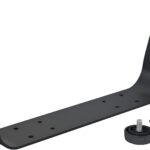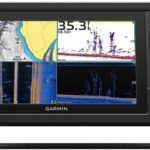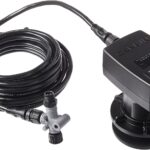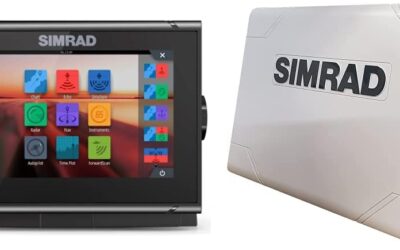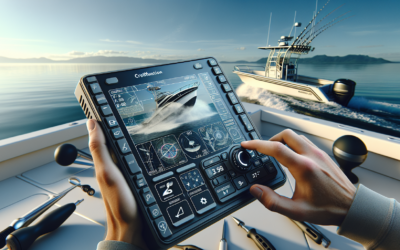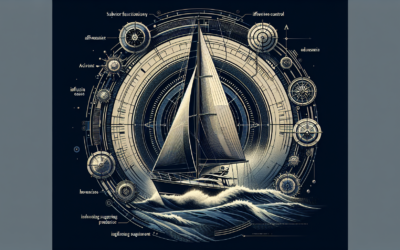If you’re an avid angler looking to take your trolling adventures to the next level, then you’ll want to discover the world of high-tech trolling using fish finders. These innovative devices have revolutionized the fishing industry, allowing fishermen to locate schools of fish with incredible accuracy. With their advanced sonar technology and user-friendly interfaces, fish finders give you the upper hand in finding the perfect spot to cast your line. Say goodbye to hours of aimlessly searching for fish and say hello to a more efficient and successful fishing experience. Whether you’re a seasoned pro or just starting out, incorporating a fish finder into your trolling arsenal is a game-changer you won’t want to miss.
Overview
Understanding high-tech trolling
High-tech trolling refers to the use of advanced technology, such as fish finders, in the fishing technique known as trolling. Trolling involves dragging lures or baited lines behind a moving boat to attract and catch fish. Fish finders are electronic devices that utilize sound waves to locate fish and underwater structures. By understanding how to use fish finders effectively, you can greatly enhance your trolling adventures and increase your chances of success.
Benefits of using fish finders
Using fish finders when trolling offers numerous benefits. Firstly, fish finders allow you to locate fish with greater precision, saving you time and increasing your chances of a successful catch. They provide real-time information about the location and depth of fish, allowing you to adjust your trolling technique accordingly. Fish finders also help you identify underwater structures, such as rocks or submerged trees, which can serve as hotspots for fish activity. By utilizing this technology, you can maximize your fishing efficiency and make the most of your trolling expeditions.
Types of fish finders available
There are various types of fish finders available on the market, each with its own unique features and capabilities. Traditional fish finders use single-frequency sonar technology and display information on a two-dimensional screen. These are a great option for beginners or those on a budget. On the other hand, advanced fish finders utilize cutting-edge technology such as CHIRP, side imaging, and down imaging. These models provide more detailed and accurate readings, making them ideal for experienced anglers or those looking for more advanced features. When choosing a fish finder, consider your fishing needs, budget, and experience level to select the right device for you.
Choosing the Right Fish Finder
Considerations for selecting a fish finder
When selecting a fish finder for trolling, there are several important factors to consider. Firstly, consider the size and type of water body you will be fishing in. Larger bodies of water may require a fish finder with a greater range and more powerful sonar capabilities. Additionally, think about the depth at which you will be fishing. Some fish finders have limited depth ranges, so ensure the device you choose can accommodate the depths you plan to explore.
Another consideration is the display size and resolution. A larger display with higher resolution will provide clearer and easier-to-read images, making it simpler to interpret the fish finder readings. Lastly, consider your budget and the available features within your price range. While more expensive fish finders often offer more advanced features, there are plenty of affordable options on the market that can still provide excellent results.
Features to look for in a fish finder
When choosing a fish finder for trolling, keep an eye out for certain features that can greatly enhance your fishing experience. Firstly, look for a fish finder with a high-quality sonar system. This will provide accurate and detailed readings, allowing you to locate fish and underwater structures with precision. Additionally, consider the frequency capabilities of the fish finder. Higher frequencies can provide more clarity, especially in shallower waters, while lower frequencies can penetrate deeper depths.
Another important feature to consider is the device’s power output. Higher power outputs allow for greater depth penetration, which can be crucial when fishing in deep waters. Additionally, look for a unit with a large and easy-to-read display. This will make it simpler to interpret the fish finder readings, even in bright sunlight or rough sea conditions. Lastly, consider any additional features that may be beneficial, such as GPS integration, mapping capabilities, or compatibility with other electronic devices.
Popular fish finder brands
There are several popular fish finder brands that offer reliable and high-quality products. Some of the leading brands in the industry include Garmin, Lowrance, Humminbird, and Raymarine. These companies have established themselves as reliable manufacturers of fish finders, offering a range of products to suit different budgets and fishing needs. When choosing a fish finder, it can be helpful to read reviews, compare features, and consider the reputation and customer support offered by different brands. This will ensure you select a fish finder that meets your expectations and provides a positive trolling experience.
Installation and Setup
Mounting the fish finder on your boat
Once you have chosen the right fish finder for your trolling adventures, it’s important to properly mount it on your boat. Begin by selecting a suitable location for the fish finder display, ensuring it is easily accessible and visible from your fishing position. Many fish finders come with mounting brackets or hardware specifically designed for easy installation on boats. Follow the manufacturer’s instructions to securely attach the display unit to the boat, ensuring it is stable and protected from water splashes.
Connecting the necessary cables
After mounting the fish finder display, it’s time to connect the necessary cables. Most fish finders require a power source, which is usually the boat’s battery. Locate the appropriate power cable and connect it to the fish finder according to the manufacturer’s instructions. Make sure the connection is secure and protected from water exposure.
Additionally, fish finders typically require a transducer cable to transmit and receive sonar signals. Locate the transducer cable and connect it to the designated port on the fish finder. This cable should be carefully routed and protected to prevent damage or interference.
Setting up the display and transducer
Once the fish finder is securely mounted and the cables are connected, it’s time to set up the display and transducer. Turn on the fish finder and follow the on-screen prompts to configure the settings according to your preferences. This may include selecting the desired frequency, adjusting the sensitivity, setting the depth range, and choosing any additional features you wish to activate.
Next, position and install the transducer. The transducer is responsible for emitting and receiving sonar signals, so it should be properly placed in the water. Follow the manufacturer’s instructions to position the transducer, ensuring it is submerged and securely attached to the boat. Take note of any specific recommendations regarding transducer installation, such as the need for a specific angle or depth.
Once the display and transducer are set up, take a moment to familiarize yourself with the fish finder’s controls and menus. Understanding the device’s functionality will allow you to make the most of its features and optimize your trolling experience.
Understanding Fish Finder Technology
Working principles of fish finders
Fish finders work on the basic principle of sonar technology. When the transducer emits a sound wave, it travels through the water and bounces off any objects in its path, such as fish or underwater structures. The transducer then receives the reflected sound waves and converts them into electrical signals, which are processed and displayed on the fish finder’s screen.
The time it takes for the sound wave to travel to the object and back to the transducer is used to calculate the depth of the objects. By analyzing the strength and frequency of the returned signals, the fish finder can distinguish between different types of objects, such as fish, rocks, or vegetation.
Different types of sonar technology
There are several types of sonar technology used in fish finders, each offering different benefits and capabilities. Traditional fish finders utilize single-frequency sonar, which emits a single frequency of sound waves. These devices are reliable and affordable, making them a popular choice for beginners. However, single-frequency sonar provides limited detail and may struggle to differentiate between closely spaced fish or structures.
Advanced fish finders use technologies such as CHIRP (Compressed High-Intensity Radiated Pulse), side imaging, and down imaging. CHIRP technology emits a range of frequencies simultaneously, providing more detailed readings and enhanced target separation. Side imaging uses a thin, fan-shaped beam to capture a wider and more comprehensive view of the underwater surroundings. Down imaging, on the other hand, provides a detailed view of the bottom structure directly below the boat.
Each type of sonar technology offers its own advantages and disadvantages, so consider your fishing needs and budget when selecting a fish finder with the appropriate sonar technology.
Interpreting fish finder readings
Interpreting the readings on a fish finder display can initially seem overwhelming, but with practice, it becomes second nature. Fish are typically represented as arches or lines on the screen, with larger arches indicating bigger fish. Pay attention to the depth at which the fish are located, as this can guide you in adjusting your trolling technique.
In addition to fish, fish finders can provide valuable information about underwater structures. Rocks, vegetation, and other structures will appear as distinct shapes or irregularities on the screen. Understanding how to identify and interpret these features will give you a better idea of the underwater environment and where fish are likely to be located.
Lastly, fish finders often display additional data such as water temperature and depth. This information can be helpful in determining the ideal conditions for specific types of fish or identifying temperature preferences for certain species.
Optimizing Fish Finder Settings
Adjusting sensitivity and depth range
Optimizing the sensitivity and depth range settings on your fish finder can greatly improve its performance. Start by adjusting the sensitivity level, which determines how much detail the fish finder displays. Set the sensitivity too high, and you may see excessive clutter or false readings. Set it too low, and you may miss subtle fish movements or underwater structures. Experiment with different sensitivity levels to find the right balance for the fishing conditions and your preferences.
Next, adjust the depth range to match the area you are fishing. This setting determines the maximum depth at which the fish finder will display readings. Fishing in shallow waters? Set the depth range accordingly to avoid unnecessary clutter on the screen. Planning to venture into deeper depths? Adjust the depth range to ensure you receive accurate readings without missing any fish or structures below.
Fine-tuning frequency and cone angle
The frequency and cone angle settings on your fish finder can affect the level of detail and coverage provided by the device. Higher frequency settings, such as 200kHz or higher, offer more detail and resolution, making them ideal for shallow waters or when targeting smaller fish. Lower frequency settings, such as 50kHz, allow for greater depth penetration but may sacrifice some detail. Adjust the frequency to suit the fishing conditions and your target species.
Similarly, the cone angle determines the width of the sonar beam emitted by the transducer. A wider cone angle provides a broader coverage area but may sacrifice some detail. A narrower cone angle provides a more focused and detailed view but has a narrower coverage area. Consider the type of fishing you will be doing and the level of detail required to determine the appropriate cone angle setting.
Using advanced settings for better results
Many fish finders offer advanced settings that allow for further customization and optimization. These settings can include noise filters, color palettes, or even advanced imaging modes such as CHIRP or side imaging. Experimenting with these settings can provide more accurate and detailed readings, depending on the fishing conditions and your preferences. Don’t be afraid to explore these advanced features, as they can greatly enhance your trolling adventures and improve your chances of success.
Mapping and GPS Integration
Utilizing fish finder’s mapping capabilities
Fish finders with built-in mapping capabilities offer a valuable tool for trolling adventures. These devices allow you to create detailed maps of the water body you are fishing in, including depth contours, underwater structures, and even custom waypoints or routes. By utilizing the mapping features, you can navigate unfamiliar waters with ease, identify productive fishing areas, and record your favorite fishing spots for future reference.
When using the mapping capabilities, ensure the fish finder’s GPS is activated and functioning properly. This will record your boat’s position and allow for accurate mapping and waypoint creation. Take advantage of the GPS features to mark fishing spots, track your trolling routes, and easily return to previously successful locations.
Importance of GPS integration
GPS integration in fish finders is not only beneficial for mapping purposes but also for navigation and safety. The GPS feature allows you to accurately track your boat’s position, speed, and direction. This can be especially useful when trolling in unfamiliar or large bodies of water, ensuring you can navigate safely and efficiently. GPS integration also allows for features such as course plotting, compass functionality, and even weather updates, providing a comprehensive toolset for your trolling adventures.
When selecting a fish finder with GPS integration, consider the accuracy and reliability of the GPS system, as well as any additional features or compatibility with external navigation tools or charts. A dependable GPS system will greatly enhance your fishing experience and help keep you safe on the water.
Creating waypoints and navigation routes
One of the most useful features of fish finders with mapping and GPS integration is the ability to create waypoints and navigation routes. Waypoints are specific locations marked on the map, such as productive fishing spots, underwater structures, or areas of interest. By setting waypoints, you can easily navigate back to these locations in the future, saving time and increasing your chances of success.
Navigation routes, on the other hand, allow you to plan and follow a specific path while trolling. By creating a route on the fish finder’s map, you can ensure you cover the desired area and maximize your time on the water. These routes can be easily adjusted, duplicated, or shared with other fishing enthusiasts, making them a valuable tool for planning and executing successful trolling adventures.
Trolling Techniques and Strategies
Understanding trolling as a fishing method
Trolling is a popular fishing technique that involves dragging baited lines or lures behind a moving boat to attract and catch fish. The boat’s movement creates the illusion of a prey fish in distress, attracting predatory fish and increasing the chances of a strike. Trolling can be done at various speeds and depths, depending on the target species and fishing conditions.
One of the advantages of trolling is the ability to cover a large area of water, increasing the chances of encountering active fish. By utilizing fish finders when trolling, you can locate fish and underwater structures with precision, allowing you to adjust your trolling technique accordingly.
Factors to consider for successful trolling
Several factors contribute to successful trolling adventures. Firstly, consider the speed at which you are trolling. Different fish species have different preferences when it comes to lure or bait presentation speed. Use your fish finder to identify the depth at which fish are located and adjust your trolling speed accordingly. Experiment with different speeds to find the optimal one for the species you are targeting.
Secondly, pay attention to the type and color of lures or bait you are using. Fish finders can help you determine the preferred depth and location of fish, allowing you to select the appropriate lure or bait that matches their feeding patterns. Additionally, consider the water conditions, such as clarity, temperature, and current, as these can also impact the effectiveness of your trolling techniques.
Lastly, maintain a consistent trolling pattern and keep an eye on your fish finder’s readings. By trolling in a straight line or following a specific route, you can ensure efficient coverage of the water and maximize your chances of encountering fish. Use your fish finder to identify any changes in depth, structure, or fish activity, and adjust your trolling pattern accordingly.
Using fish finders to locate trolling hotspots
Fish finders are incredibly helpful in locating trolling hotspots, which are areas with high fish activity. When trolling, use your fish finder to identify concentrations of fish, underwater structures, or abrupt changes in depth. These areas often attract fish, making them prime spots to target.
Fish arches on the fish finder screen indicate the presence of fish, with larger arches usually representing larger fish. Pay attention to the depth at which the fish are located, as this can help you adjust your trolling technique. Additionally, look for clusters of fish or fish schools, as these indicate a higher concentration of fish in a specific area.
Furthermore, use your fish finder to identify underwater structures, such as reefs, rocks, or submerged trees. These structures create ideal habitats for fish, offering shelter and food sources. Trolling near or around these structures can increase your chances of a successful catch.
By utilizing your fish finder to locate trolling hotspots, you can optimize your trolling technique, focus your efforts on productive areas, and increase your chances of a successful fishing adventure.
Interpreting Fish Finder Data
Identifying fish arches and fish schools
One of the most important skills when using a fish finder is the ability to identify fish arches and fish schools on the display. Fish arches are curved shapes that appear on the screen and represent the presence of fish. Larger arches usually indicate larger fish, while smaller arches may represent smaller or schooling fish.
Fish schools, on the other hand, appear as clusters of multiple fish arches in close proximity to each other. These indicate a higher concentration of fish in a specific area and can be a valuable target for trolling. By identifying fish schools, you can adjust your trolling technique, focus your efforts on productive areas, and increase your chances of a successful catch.
To interpret fish arches and schools, it’s essential to understand the sonar readings provided by the fish finder. Pay attention to the depth at which the fish are located, as this can guide you in adjusting your trolling technique. Experiment with different speeds, lure depths, and presentations until you find the most effective method for enticing the fish in the schools.
Differentiating between fish and underwater structures
A crucial skill when using a fish finder is the ability to differentiate between fish and underwater structures or objects. Fish finders provide information about the underwater environment, including the presence of rocks, vegetation, or other structures that can attract fish.
Underwater structures typically appear as distinct shapes, irregularities, or solid lines on the fish finder screen. They can help you identify potential trolling hotspots, such as reefs, drop-offs, or submerged trees. By recognizing these structures, you can adjust your trolling patterns, target specific areas, and increase your chances of encountering fish.
Differentiating between fish and underwater structures can be challenging, especially when they are located close together. It’s important to consider the size, shape, and movement patterns of the objects displayed on the fish finder. Fish arches usually have a distinct curved shape and may exhibit some movement or changes in location. In contrast, underwater structures typically have solid lines or irregular shapes and remain stationary on the screen.
With practice and experience, you will become adept at deciphering fish finder data and distinguishing between fish and underwater structures. This skill will greatly enhance your fishing efficiency and success rate while trolling.
Analyzing water temperature and depth readings
Fish finders often display additional data, such as water temperature and depth readings. These readings can provide valuable insights and help you make informed decisions regarding your trolling techniques.
Water temperature is an important factor that influences fish behavior and their preferred feeding zones. By analyzing the water temperature readings on your fish finder, you can identify suitable temperature ranges for different fish species. This information allows you to target specific areas with the ideal temperature and increase your chances of a successful catch.
Depth readings provided by the fish finder are also crucial in determining the location and behavior of fish. Pay attention to the depth at which fish are located, as this can guide you in adjusting your trolling technique. Different species of fish have different depth preferences, and using your fish finder to identify their location can greatly increase your chances of success.
By analyzing water temperature and depth readings, along with fish arches and underwater structures, you can gain a comprehensive understanding of the underwater environment and make informed decisions to optimize your trolling technique.
Advanced Techniques for High-Tech Trolling
Downrigging for precise depth control
Downrigging is an advanced technique used in high-tech trolling to achieve precise depth control. In downrigging, a weighted device known as a downrigger is attached to the boat and used to deploy the fishing lure or bait to a specific depth. The downrigger allows you to precisely control the depth at which your lure or bait is presented, increasing your chances of attracting fish at their preferred depth.
To downrig effectively, use your fish finder to locate the desired fishing depth and adjust the downrigger accordingly. By fine-tuning the depth and monitoring the fish finder readings, you can ensure your lure or bait is presented at the optimal depth for the fish you are targeting. This technique is particularly useful when fishing for species that reside at specific depths or in deep waters.
Downrigging requires specialized equipment, such as downriggers, downrigger weights, and release clips. Familiarize yourself with these tools and practice using them in conjunction with your fish finder to achieve precise depth control and maximize your trolling success.
Using side imaging for comprehensive views
Side imaging is a powerful feature available in certain fish finders that provides comprehensive views of the underwater surroundings. This technology uses a thin, fan-shaped beam to capture detailed images of the sides of the boat, offering a wider coverage area compared to traditional sonar.
By utilizing side imaging, you can identify underwater structures, fish schools, and changes in bottom contour with remarkable clarity. This allows for more accurate navigation, efficient coverage of the water, and increased chances of encountering fish. Side imaging is especially useful when exploring large bodies of water or areas with complex underwater structures.
To use side imaging effectively, consult the manufacturer’s instructions for your fish finder model to understand the optimal settings and interpretation techniques. Practice interpreting the side imaging display to identify fish, structures, and the desired trolling hotspots. With experience, you will be able to use side imaging as a valuable tool to enhance your trolling adventures.
Utilizing CHIRP technology for enhanced target separation
CHIRP (Compressed High-Intensity Radiated Pulse) technology is an advanced sonar technology that offers enhanced target separation and detailed readings. Unlike traditional fish finders that emit a single-frequency sonar wave, CHIRP fish finders emit a range of frequencies simultaneously, providing more accurate and detailed readings.
By utilizing CHIRP technology, you can distinguish between closely spaced fish, identify individual fish within a school, and detect subtle underwater structures or changes in bottom contour. The enhanced target separation and clarity offered by CHIRP technology significantly improve your ability to locate and target fish while trolling.
To utilize CHIRP technology effectively, ensure your fish finder is equipped with this feature and follow the recommended settings provided by the manufacturer. Experiment with different frequency ranges and sensitivity levels to find the optimal configuration for your fishing conditions and target species. By maximizing the capabilities of CHIRP technology, you can take your high-tech trolling adventures to the next level.
Tips for a Successful Trolling Adventure
Planning your trolling route
Planning your trolling route is crucial for a successful adventure. Before you hit the water, take the time to study maps, charts, and other resources to identify potential trolling hotspots, underwater structures, and depth contours. Utilize your fish finder’s mapping capabilities and GPS integration to mark these locations as waypoints or create navigation routes.
Consider factors such as water temperature, depth preferences of your target species, and current fishing conditions when planning your route. Identify areas with optimal conditions for the species you are targeting and prioritize these locations in your trolling route.
Additionally, be flexible and adaptable in your route planning. Weather conditions, water currents, and other variables may necessitate adjustments to your original plan. By remaining open to changes and having alternative routes or backup spots identified, you can make the most of your trolling adventure and increase your chances of success.
Adapting to changing fishing conditions
Fishing conditions can change rapidly, requiring anglers to adapt their trolling techniques accordingly. Stay aware of changes in water clarity, temperature, wind patterns, and other environmental factors that can influence fish behavior. Use your fish finder to monitor these changes and adjust your trolling speed, depth, or lure presentation accordingly.
Additionally, pay attention to the fish finder’s readings to detect any changes in fish activity, concentrations, or preferred depths. By staying in tune with the fish finder’s real-time data, you can make informed decisions and adapt your approach, ensuring you are fishing in the most productive areas and at the optimal depths.
Flexibility and adaptability are key when trolling. By continually monitoring the fishing conditions and your fish finder’s readings, you can respond to changes and maximize your chances of a successful catch.
Maintaining a constant speed and depth
When trolling, it’s important to maintain a constant speed and depth to optimize lure or bait presentation and attract fish effectively. Varying your trolling speed or depth can result in inconsistent lure action or improper depth presentation, reducing your chances of success.
Use your fish finder to identify the desired depth and speed at which fish are located. Adjust your trolling setup to match these preferences, ensuring your lures or baits are presented at the most enticing depth and speed for your target species.
Consider utilizing tools such as downriggers or planer boards to maintain a consistent depth while trolling. These devices ensure your lures or baits are consistently at the desired depth, allowing for efficient coverage of the water and increased chances of attracting fish.
By maintaining a constant speed and depth, you create a more consistent and appealing trolling pattern, maximizing your chances of enticing fish to strike and ensuring a successful trolling adventure.
In conclusion, high-tech trolling using fish finders can greatly enhance your fishing experience and increase your chances of success. By understanding the benefits of using fish finders, choosing the right device, properly installing and setting up the fish finder, and utilizing advanced techniques, you can optimize your trolling adventures and make the most of your time on the water. With practice and experience, you will become proficient in interpreting fish finder data, locating trolling hotspots, and adapting your trolling techniques to changing fishing conditions. So grab your fish finder, hit the water, and enjoy your high-tech trolling adventures!

